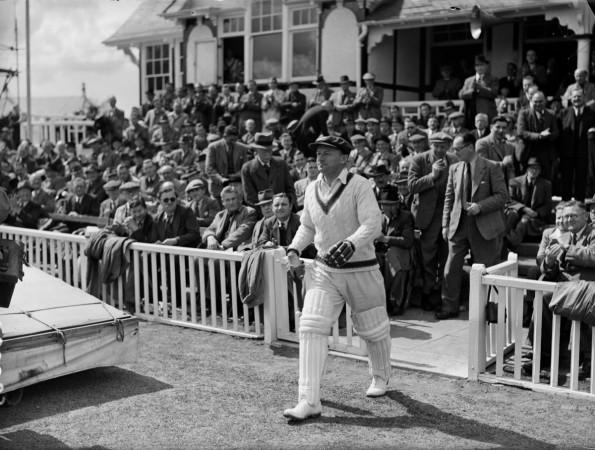
There have been many great batsmen. There have been some truly extraordinary batsmen. And then there was Donald Bradman.
Widely regarded as the greatest batsman to have played the game, Sir Don Bradman was one of a kind. His mind-boggling feats have been a part of cricketing lore for decades and still fascinates statisticians.
He dominated the cricketing world through the 1930s and 1940s and has left such an indelible mark on the game that even 17 years after his death in 2001, his name is always taken with great reverence.
Born in New South Wales, Australia, on the 28 August 1908, 'The Don', as he was fondly called, made his debut against England at Brisbane in the first Ashes Test of 1928. With scores of 18 and 1, Bradman wasn't able to impress much in his debut Test.
However, he gave an indication of his genius in his very second match as he compiled scores of 79 and 112 in the second Test of the series at Melbourne. Ever since then he simply didn't look back.
In the 52 Tests and 80 innings that Bradman played in his career, he amassed 6996 runs at a staggering average of 99.94. A testimony to his greatness is that not a single living cricketer has been able to come anywhere close to this extraordinary batting average – Australia's Steve Smith, with 61.37, is the nearest any batsman has come with a minimum of 50 Tests.
Before Sunil Gavaskar overtook him, it was Bradman who had held the record for the most centuries in Test cricket with his 29 tons along with 13 fifties. He had also scored 12 double hundreds – the highest by any Test batsman to date – and two triple centuries in his remarkable career.
Throughout his illustrious career, the great Australian batsman went on to leave his mark against every Test nation he played against – 37 of them against England at an outstanding average of 89.78 with 19 centuries.
Even in the infamous 'Bodyline' series of 1932-33, where the English bowlers, led by Harold Larwood, had made life miserable for all Australian batsmen, Bradman managed to average 56 against really hazardous bowling.
While he had several notable performances throughout his career, some of Bradman's best efforts are known to be his 334 against England at Leeds in 1930, the unbeaten 299 against South Africa at Adelaide in 1932 and the 103* versus England at Melbourne in the 2nd Test of the 'Bodyline' series.
While Bradman wasn't known to be an elegant batsman, he was technically very sound and could play shots with equal authority on both sides of the wicket.
In fact, those who had watched him play often claim that there was a magnetism in Bradman's batting that would keep the spectators enthralled as he would keep carving the bowlers to all parts of the ground. Bradman was perhaps no artist with the bat, but he was beautiful to watch.
Truly, the world hasn't seen and is unlikely to see a batsman of the pedigree of Sir Donald Bradman ever again. He was a once in a lifetime cricketer and his feats would be cherished for as long as this game stays alive.










